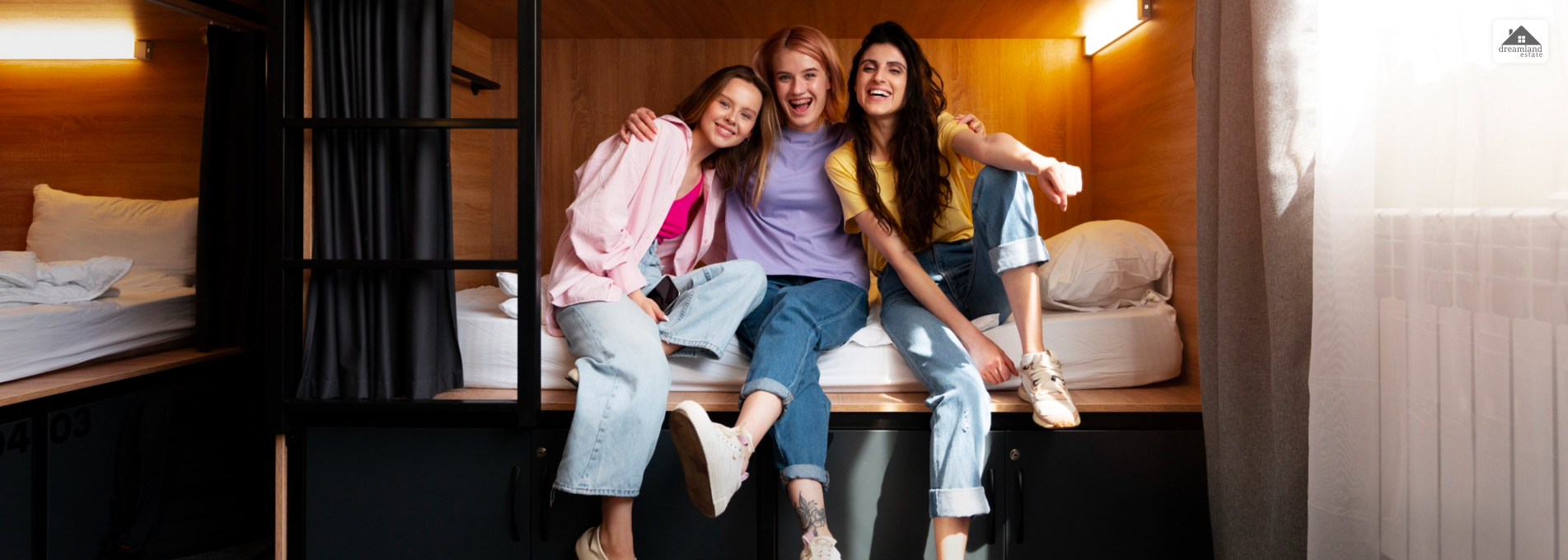What Is Rent Control: Pros And Cons Associated With Rent Control

Rent control refers to a government initiative to put a limit on the amount any landlord might demand while renting or leasing a property. The rent control laws are generally enacted by the assigned municipalities with broad details. The goal is to maintain an affordable living cost for residents belonging to the lower-income category.
In the U.S.A., the rent control process is not too widespread. But that doesn’t indicate that people do not consider ‘what is rent control.’ Almost 182 U.S. municipalities consist of rent control regulations. Let’s know more about it in this comprehensive guide.
What Is Rent Control?

Before we can even start discussing the pros and cons, we have to take things slow and understand the fundamentals of the whole deal.
Only then would you be able to understand the pros and cons of Rent control effectively? Therefore, let us dive right in and realize what Renr Control actually is.
Rent control first came into action back during WWI. The law started out as a mass public outrage against rent-profiteering rackets.
Between 1919 and 1924, several municipalities and cities in the US decided to adopt these laws unofficially.
Significant Cities With Rent Control Laws

By the time WWII and the Great Depression came, the laws were adopted locally by several state governments. During the 1970s, Nixon adopted the law as a federal law. However, the law did not last long and had a lifecycle of about just three years.
Later on, these laws were adopted by local and state governments. Even though the laws failed to last longer than just three years, many people wanted the law to return. One such group was the people of Berkley.
On June 6th, 1973, rent control made a return to Berkley with a significant effort by the people. Citizens of Berkley organized a mass ballot system. The outcome of the ballot was in favor of rent control. As a result, Berkeley, California, was the first-ever local municipality to have rent control laws.
Currently, the rent control laws of the USA do not enjoy a federal status. This means it is up to each state to establish these laws individually.
New York City

New York City, or the Big Apple, is known to have one of the most extensive and intricate history rent control. Some historians even believe that New York City was the place that started it all.
Rent Control Laws were first introduced back in 1943. This was a war effort against the Axis powers. Around 22,000 rent units have been implemented, and rent control regulations are in place.
Rent control regulations apply to tenants who have been living in the same apartment since 1971. The regulation adds stringent protection for tenants and landlords. Therefore, the system works both ways.
San Francisco

San Francisco is one of the most prominent cities in America. The city houses a significant chunk of the American population and is one of the most strategically important locations in America, so much so that the city is flocked with newer residents every year.
The rent control system was first introduced in 1979. As soon as the system was introduced, the policy became a raging success. As a result, around 76% of the city was put under the law.
This allowed tenants of different sections to take advantage of the law and control their rent.
Los Angeles

The final city that we would like to point out is Los Angeles. LA passed the law around the same time as San Francisco. The law was passed around 1978 and was soon adopted by around 78% of the population.
LA and San Francisco rent control laws function mainly similarly. Therefore, several points are repeated in the clauses of both cities. The clauses still remain the same and function identically.
Functions Of Rent Control

The rent control process has a hotly debated and lengthy history. While it can increase affordability for tenants, these benefits might be offset by higher costs- especially in uncontrolled rental industries. The reason for such an inconsistency in pricing is because of less rental units supply and increasing population.
Even today, a lot of tenants, the community organizes, and tenant’s rights groups favor rent control. Owing to its ability to create the perfect balance between the rights of a landlord and a renter. As such, the rent-controlling process is reemerging as a prospective tool for addressing housing affordability crises.
Since rent stabilization does not comprise testing, it might fund the high-income household rents. Lawsuits might be filed against rent regulations if the focus diverges from low-income households, where it was actually meant to be. In order to understand what is rent control and the places it works, understanding rent stabilization is important.
Pros And Cons Of Rent Control

The benefits and drawbacks of rent control depend on the perspective you observe. For a comprehensive understanding, I have cataloged the pros and cons in two sections:
- From the perspective of “tenants.”
- From the “communities” perspective
Pros For Tenants
Tenants usually receive the following benefits due to rent control:
- Projected Rent Increases & Rent
The primary perk of an apartment that has been rent-controlled is that you can determine how high your rent goes. The maximum price a landlord can charge you is determined by local law, which ultimately makes it predictable.
This simply means that the rent increases will be extremely metered. Limited and predicted rent increases are definitely the biggest benefits of rent control. Not only does it help you to understand what is rent control, but it also signifies the importance of such an apartment.
- A Sense Of Stability
In a rent-stabilized or rent-controlled apartment, you might get a heightened sense of security. The worry of waking up one morning and discovering that your landlord wants to increase the rent is a thing of the past.
Furthermore, a lot of rent stabilization and control laws state how often your landlord can increase or levy the rent. It further protects you against unprecedented situations.
Cons For Tenants
Now, rent control is not only about the merriments one receives. Sometimes, it also comes with its set of drawbacks, which are mentioned below:
- Difficult To Secure
One of the most prevalent issues with rent-controlled construction is that you can rarely find it. Usually, a person opting for rent control has to vacate his property, after which it no longer remains a rent-controlled unit.
But rent-stabilized units are different. Here, you do not have to maintain a communication or bond with the last tenant. You can secure rent stabilization benefits anytime, which is not the same with rent control.
- Landlord Receives No Incentive For Upgrading Your Apartment
When an apartment is subjected to rent control legislation, the landlord receives very little incentive to enhance the property. They can no longer define what is rent control in terms of property improvement.
Even if your unit is the most appealing in the entire block, the landlord can only charge as per the local law. Consequently, certain landlords might update the unit only when something is absolutely important.
Pros For Communities
Moving on, we have a set of pros that rent control offers to the entire community. Here are some of them:
- Reduced Renter Churn
With a rent-stabilized or rent-controlled unit, tenants are less likely to switch once their lease ends. Rather, they receive renewal incentives in order to retain them in the unit for a prolonged period.
This is incredibly advantageous for communities as it lets families connect with their roots in a location. This provides them with a greater ownership sense, encouraging them to become increasingly invested. Ultimately, the welfare of the entire neighborhood is observed.
- More Local Spending
Once you know what is rent control, you get to know how it helps to spend more money locally. When there are lower rent prices, a lot of families and individuals have extra money to spend on their other wants.
If the spent money is solid enough, there might be an encouragement for new development. For instance, it might improve the visual appeal of the apartment to new retailers and small businesses.
Cons For Communities
A rent-controlled unit has some disadvantages for communities. What are they? Check them out here:
- Shrinking Residential Conditions
As already mentioned, a rent-controlled unit provides less incentive to landlords. It might or might not make the apartment livable if the property is rent-controlled for a certain period of time.
Shrinking housing circumstances not only harms the tenants but also sabotages communities. The property values shrink eventually, and businesses are inclined to operate or open in this particular area. Hence, development projects might be established in other neighborhoods.
- Reduced Renter Mobility
Although the rent predictability is beneficial, reduced renter mobility might take you 10 steps back. Usually, rent control encourages other tenants to continue staying in the apartment if rent control is not a factor.
They can typically downsize the analysis of “what is rent control.” At times, the rent control process makes it a bit difficult for young families to look for larger units in the neighborhood. Consequently, they are not reasonably priced.
The Bottom Line: Should You Switch To A Rent-Controlled Unit?
Now that you are well aware of what is rent control, you must consider whether you should opt for it or not. Acquaint yourself with the local tenant-landlord laws.
Since not all rent stabilization or control laws are not the same, you must always enquire which law your landlord follows. This is the only way to make an informed decision about rent-controlled apartments.
Read Also:











Leave A Reply